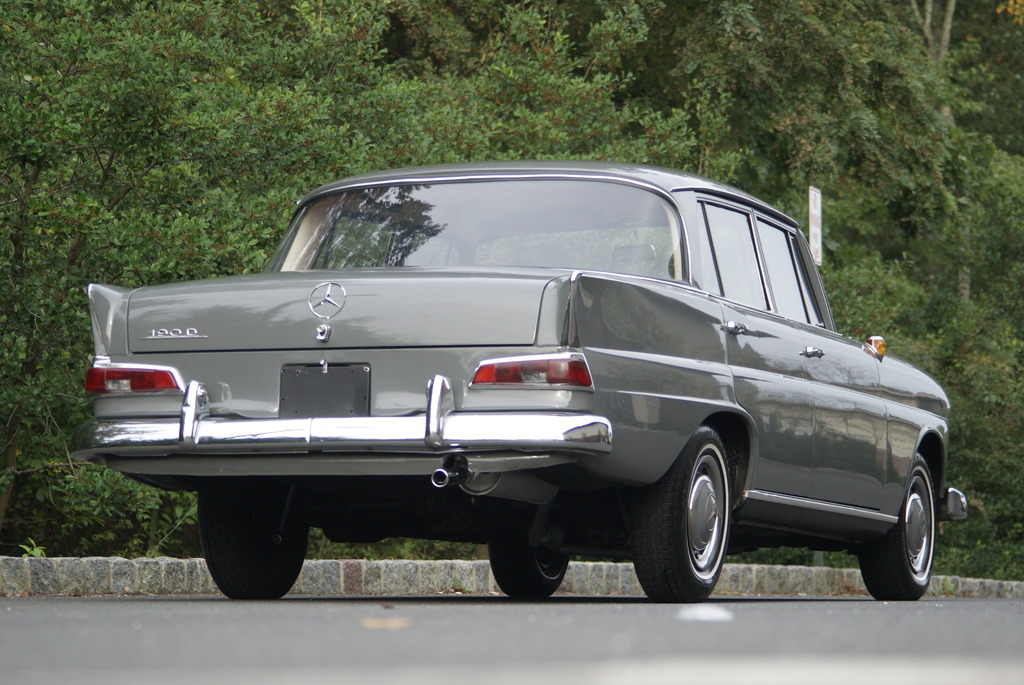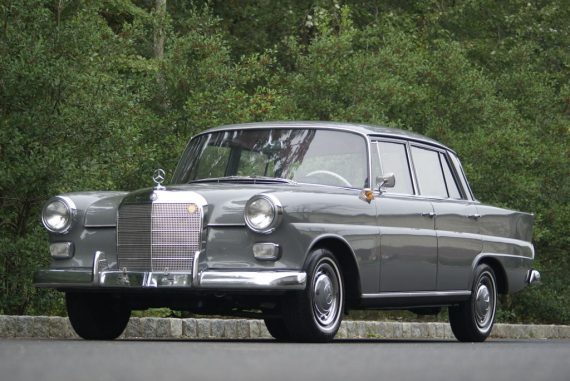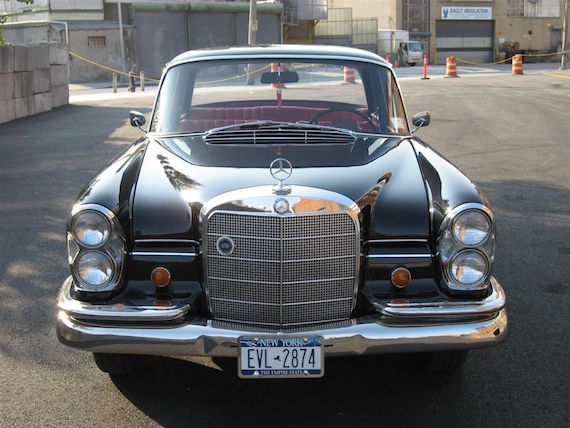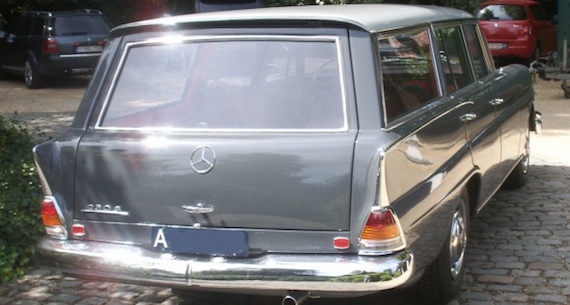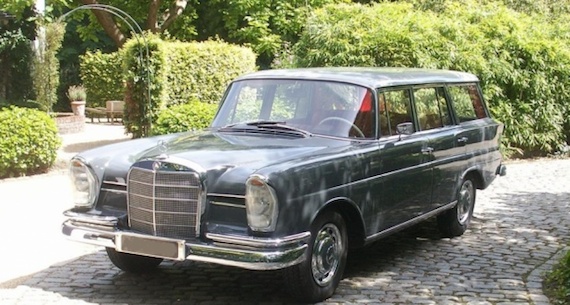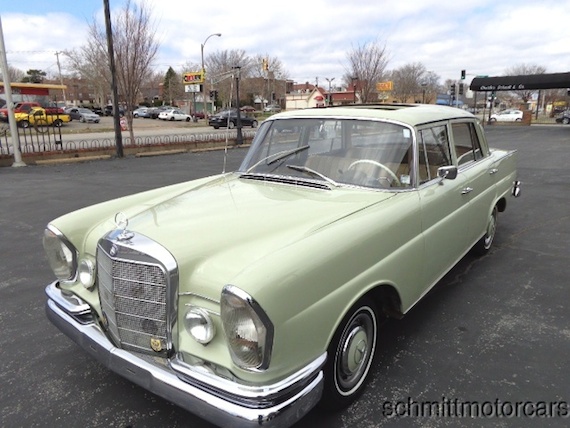It’s amazing what happens to a car when you put fins on it. That’s what happened to the entry level line Mercedes-Benz in 1961. The W110 was a perfectly tame, conservatively styled basic sedan all the way up to the point past the rear axle then the fins come out and the crowd goes wild. Because of these fins, the W110 now carries the name ‘Heckflosse’ which is of course is German for ‘Fintail.’ These Heckflosse sedans were nothing special outside of the style point and Mercedes really didn’t plan for them to be their flagship. You had two options for the engine in a 1.9 liter gas four cylinder or the 2.0 liter diesel. Both a little under powered, but sturdy and dependable. With the newest of these cars just being almost 50 years old, the Heckflosse is starting to become more rare by the year. So let’s take a look at this wonderful 190D for sale in New Jersey.
Tag: heckflosse
Walking past the Mercedes-Benz dealer the other day, it struck me that there’s not a single car in the lineup that is appealing to me, save for the AMG GT. Sure, the Geländewagen hasn’t changed much in the grand scheme, but its festooned with more chrome and lights than Studio 54 these days. Looking back to a car like this 1967 230, I’m reminded of how Mercedes could get it right, even while employing a styling gimmick such as tail fins. Known as the Heckflosse, or Fintail, in German, this car we see here for sale in California represents the end of the run for the W110, a sedan phased out in 1968. My father owned a very early W110, a 1962 190C 4-speed manual, and this 230 brings back fond memories of that machine.
CLICK FOR DETAILS: 1967 Mercedes-Benz 230 on eBay
1 CommentThe Mercedes-Benz Fintails of the 1950s and 1960s was a rather daring design for a company noted for its adherence to traditional design. This styling hallmark would live on through the late 1960s and could be considered the grandfather to the modern day E-class sedan. The 230S we see here was one of the later expressions of the W111 design and one that found its way into my father’s garage in the 1970s. This black example for sale in New York is almost identical to my father’s car, save for the fact that his was a ’67 with a 4-speed manual on the floor and was equipped with a saddle tan MB-Tex interior.
CLICK FOR DETAILS: 1966 Mercedes-Benz 230S on eBay
Comments closedThe term “cool” is overused a lot in the English vernacular, but if one car I’ve ever discussed on GCFSB could be described as such, it’s this rare Mercedes-Benz 230S estate. Fully restored, in a very fetching color combination, replete with a 4-speed manual gearbox on the column, it doesn’t get much better than this for the five-door enthusiast. These estates were produced by IMA in Belgium, who were producing knock down kits of Mercedes sedans, as well. I have a personal connection to the W111 chassis 230S, as my father used to own a 230S sedan with a 4-speed manual on the floor years ago. Could this 230S be the ultimate chariot in which to carry the family to the country club?
CLICK FOR DETAILS: 1967 Mercedes-Benz 230S Universal on Classic Driver
1 CommentWe tend to focus a lot on low mileage, mint condition examples of our favorite German vehicles here at GCFSB, but we can also appreciate original cars with patina to remind us how things once were. The Mercedes-Benz 230S was the car that started my fascination with the Three Pointed Star, as my father owned one shortly before my birth in the 1970s. His 230S was a 1967 just like this car we see here for sale in Missouri, except his was black over palomino with a 4-speed manual on the floor. This particular 230S we’re featuring today was originally a German market car that found its way to the US in the late 1980s.
